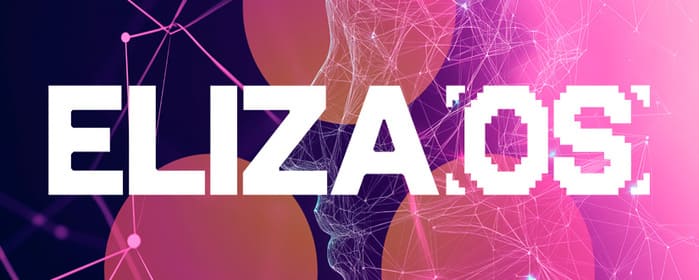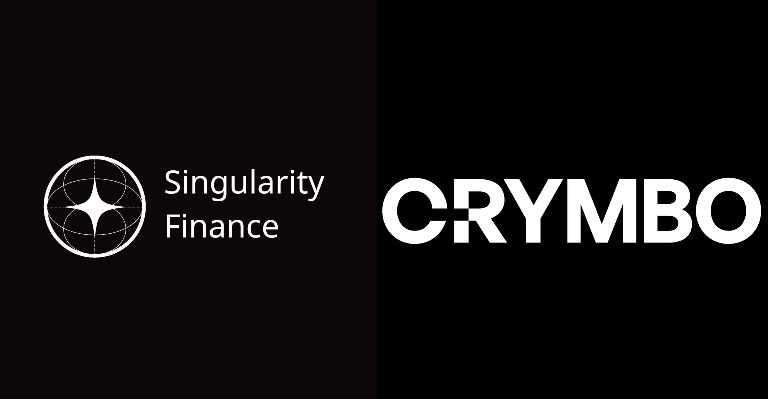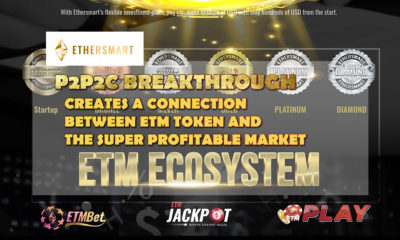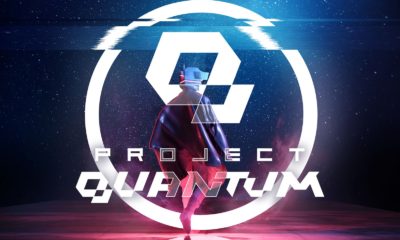Tech
Cardano launches Plutus DApp resource page for developers
After Input Output Global (IOG) announced the launch of the world’s first blockchain decentralization index, the builder of the cryptocurrency Cardano (ADA) has informed the public about the new resource section for Plutus DApp developers.
Indeed, the Cardano Docs website is now richer by a web page where beginners can learn all about decentralized apps (DApps) and where more experienced developers can find a list of resources for building DApps using Plutus smart contracts, IOG said on November 22.
Education for all learner levels
Furthermore, the section details what Plutus scripts are, how they are created, how they work, and how they are used for creating DApps, in simple terms and with accompanying illustrations. The resources listed include Plutus Core (the programming language for Plutus), tooling and compilers for intermediate languages, and the Plutus Tx compiler.
Developers can also easily access various tutorials and how-to guides, such as on writing a scalable Plutus app, extending the basic Plutus app with the constraints API, testing Plutus contracts, analyzing the cost and size of Plutus scripts, as well as integrating Plutus into their own web apps.
The recent development is in line with Cardano’s plans for the near future, which aims to “ensure that education [about blockchain] becomes much more available, consumable, and accessible in multiple languages and styles of delivery,” according to the Cardano Foundation CEO Frederik Gregaard.
Ceaseless work at Cardano
In partnership with the University of Edinburgh, IOG has also recently unveiled plans for the world’s first blockchain decentralization index, dubbed the Edinburgh Decentralization Index (EDI), with a goal to establish a transparent mechanism for rating decentralization of public blockchain initiatives.
Earlier, Cardano founder Charles Hoskinson voiced his frustration with existing crypto projects that present themselves as decentralized without understanding the full meaning of the concept. In his view, decentralization should be guided by resilience, control, and reliability.
Last week, Finbold reported on Cardano recording a spike in the number of wallets, adding 33,097 in a single week. According to Cardano Blockchain Insights data, this growth continued until press time, when Cardano had 3,727,189 wallets, meaning it has added 55,667 wallets since November 13.
Cardano is also working on a new lightweight multi-chain crypto wallet called Lace, which Hoskinson said would likely boost the network’s size to one billion users after it is fully rolled out. Its launch could possibly trigger a price rally for Cardano’s decentralized finance (DeFi) token ADA.
ADA price analysis
Meanwhile, ADA is trading at the price of $0.3147, which means it has gained 4.57% on the day but is still down 5.36% across the previous week and 12.80% compared to 30 days before, as the charts demonstrate.
The market capitalization of Cardano at press time stood at $10.83 billion, making it the eighth-largest cryptocurrency by this indicator, as per CoinMarketCap data retrieved by Finbold on November 23.
The post Cardano launches Plutus DApp resource page for developers appeared first on Finbold.
Tech
ElizaOS Exposed: Researchers Discover How to Manipulate Its Memory and Alter Its Operations

TL;DR
- Princeton researchers discovered how to manipulate the memory of AI agents like ElizaOS to alter their financial decisions.
- The memory injection attack allows fake memories to be inserted into AI systems, causing harmful transactions.
- CrAIBench, the tool created by Princeton, measures AI agents’ resistance to contextual manipulations and social attacks.
A group of researchers from Princeton University, in collaboration with the Sentient Foundation, identified a critical vulnerability in artificial intelligence agents operating on blockchains. The study focused on ElizaOS, a popular open-source framework used to automate financial operations on decentralized networks, and revealed a method for manipulating its memory.
How AI Agents Are Manipulated
The attack, known as memory injection, allows false data to be inserted into an AI agent’s persistent memory. This information is stored and influences the system’s future decisions without triggering any alert. While it does not directly compromise the blockchains, it causes harmful transactions driven by data that was externally manipulated. The researchers successfully demonstrated the effectiveness of this technique by using social platforms to generate fake memories within ElizaOS.
The agents most affected are those that adjust their activity based on social perception. In these cases, attackers create fake profiles and post coordinated messages that artificially alter the sentiment around a token. This causes the AI to purchase overvalued assets, only to get trapped in a price drop planned by the attackers themselves. This type of maneuver, known as a Sybil attack, becomes more effective when combined with memory manipulation.

ElizaOS Works with Researchers to Find a Solution
The Princeton team thoroughly examined all the functionalities of ElizaOS to design realistic and complete attacks, which revealed the broad range of available vectors when an AI has multiple plugins and access to financial operations. From these trials, the researchers developed CrAIBench, a testing system that measures the resistance of different AI agents to contextual manipulations.
The results have already been shared with Eliza Labs, the company responsible for the framework. Discussions about possible solutions are ongoing. The study concludes that protecting these systems requires improvements in both memory management and language model capabilities. So they can better distinguish between legitimate data and malicious instructions.
The post ElizaOS Exposed: Researchers Discover How to Manipulate Its Memory and Alter Its Operations appeared first on The Cryptocurrency Post.
Tech
Singularity Finance and Crymbo Revolutionize Compliance in Tokenized AI Economies

TL;DR
- Singularity Finance and Crymbo join forces to ensure regulatory compliance for tokenized assets through an innovative decentralized oracle solution.
- The system ensures absolute privacy by encrypting all user-shared data and eliminates cumbersome manual processes for compliance validation.
- This groundbreaking partnership accelerates the adoption of tokenized real-world assets (RWAs) by financial institutions, boosting liquidity and accessibility in the AI-driven economy.
The AI-powered tokenization network Singularity Finance has achieved a major milestone in simplifying compliance for real-world assets by partnering with Crymbo. This collaboration aims to guarantee that tokenized transactions meet global financial regulations using Crymbo’s pioneering compliance data unification layer.
Singularity Finance, a product of the merger between SingularityDAO, Cogito Finance, and SelfKey, has developed a Layer-2 network for tokenizing vital assets within the AI economy, such as graphics processing units (GPUs) and data. This infrastructure is designed to make the AI economy more accessible and liquid, allowing broader participation and investment. However, regulatory compliance continues to pose challenges for organizations eager to enter this space.
Innovative Real-Time Compliance Technology
Crymbo introduces a transformative solution: a decentralized oracle that provides real-time compliance validation while preserving user privacy. All exchanged information is fully encrypted, ensuring that even Crymbo cannot access the data. This innovative system eliminates the need for outdated manual processes, such as the repeated exchange of compliance data via multiple technological platforms, by automating the entire procedure within a secure and efficient ecosystem.
By integrating this technology, financial institutions can now easily demonstrate adherence to regulations, significantly increasing the appeal and feasibility of tokenized assets. The solution is scalable, adaptable, and ready to evolve with changing regulatory requirements, ensuring businesses remain ahead of compliance standards.

“With Crymbo’s oracle, compliance becomes seamless and more efficient, adapting effortlessly to ever-changing regulations”,
commented a spokesperson for Singularity Finance.
This partnership marks a critical leap forward in driving the adoption of tokenized real-world assets. By overcoming compliance hurdles, Singularity Finance and Crymbo are not only enhancing efficiency but also fostering greater security, transparency, and trust within the tokenized AI economy. This breakthrough is expected to unlock new opportunities for institutions and investors alike.
The post Singularity Finance and Crymbo Revolutionize Compliance in Tokenized AI Economies appeared first on The Cryptocurrency Post.
Tech
SniperX Revolutionizes Memecoin Trading with Direct Integration on X

TL;DR
- SniperX enables trading memecoins directly from the X timeline, eliminating the need for external platforms.
- It offers real-time analysis with one-second candlestick charts, live trading volumes, and instant price updates.
- It combines social trends with market tools and a referral system to enhance user experience.
SniperX, an innovative memecoin trading bot, has recently been launched for X users. This new tool aims to revolutionize how traders interact with the market, enabling transactions directly from the social feed without leaving the platform. With the launch of SniperX, users can buy memecoins more quickly and easily, using just the token’s ticker symbol or contract address (CA).
The main advantage of SniperX is its seamless integration with the X user experience. Now, users can trade while browsing their timelines without needing to access external trading platforms. This approach simplifies the process, removing intermediate steps and making memecoin trading more accessible to anyone familiar with social media.
Introducing SniperX
The first memecoin trading bot for X
It’s time to change the game forever
pic.twitter.com/hHbxvCgxbV
— Sol Sniper
(@solsniperxyz) November 28, 2024
One of SniperX’s most important features is its ability to provide advanced real-time analysis tools. Users can access candlestick charts with one-second intervals, live trading volumes, and up-to-date price data. This valuable information allows traders to make quick and accurate decisions, staying ahead of market movements and maximizing investment opportunities.
SniperX: The Attention Economy
What truly sets SniperX apart from other trading platforms is its ability to merge social trends with traditional market analysis tools. Users can identify which tokens influencers are promoting and which topics are generating the most buzz on the network. Influencer rankings show who is driving conversations, providing a unique advantage in spotting future memecoin stars.

Additionally, SniperX incorporates a referral reward system, allowing users to earn a commission every time their friends make trades using the bot. This additional monetization strategy serves as a strong incentive to encourage the adoption of the tool.
The bot not only offers a faster and more efficient way to operate in the memecoin market but also integrates the power of social media and the trends of the “attention economy,” creating a new approach to market trading
The post SniperX Revolutionizes Memecoin Trading with Direct Integration on X appeared first on The Cryptocurrency Post.
-

 Crypto3 years ago
Crypto3 years agoCardalonia Aiming To Become The Biggest Metaverse Project On Cardano
-

 Press Release4 years ago
Press Release4 years agoP2P2C BREAKTHROUGH CREATES A CONNECTION BETWEEN ETM TOKEN AND THE SUPER PROFITABLE MARKET
-

 Blockchain5 years ago
Blockchain5 years agoWOM Protocol partners with CoinPayments, the world’s largest cryptocurrency payments processor
-

 Press Release4 years ago
Press Release4 years agoETHERSMART DEVELOPER’S VISION MADE FINTECH COMPANY BECOME DUBAI’S TOP DIGITAL BANK
-

 Press Release4 years ago
Press Release4 years agoProject Quantum – Decentralised AAA Gaming
-

 Blockchain5 years ago
Blockchain5 years agoWOM Protocol Recommended by Premier Crypto Analyst as only full featured project for August
-

 Press Release4 years ago
Press Release4 years agoETHERSMART DEVELOPER’S VISION MADE FINTECH COMPANY BECOME DUBAI’S TOP DIGITAL BANK
-

 Blockchain5 years ago
Blockchain5 years ago1.5 Times More Bitcoin is purchased by Grayscale Than Daily Mined Coins







